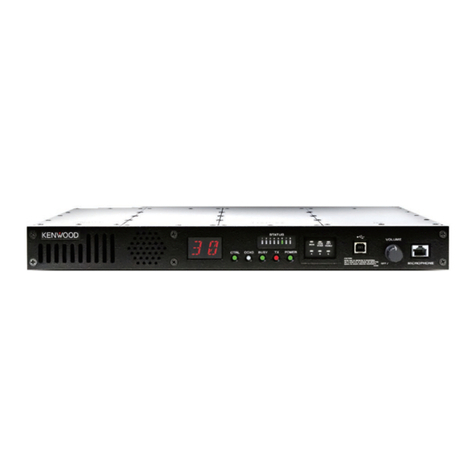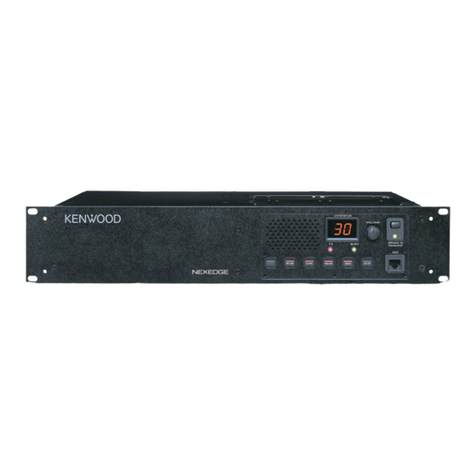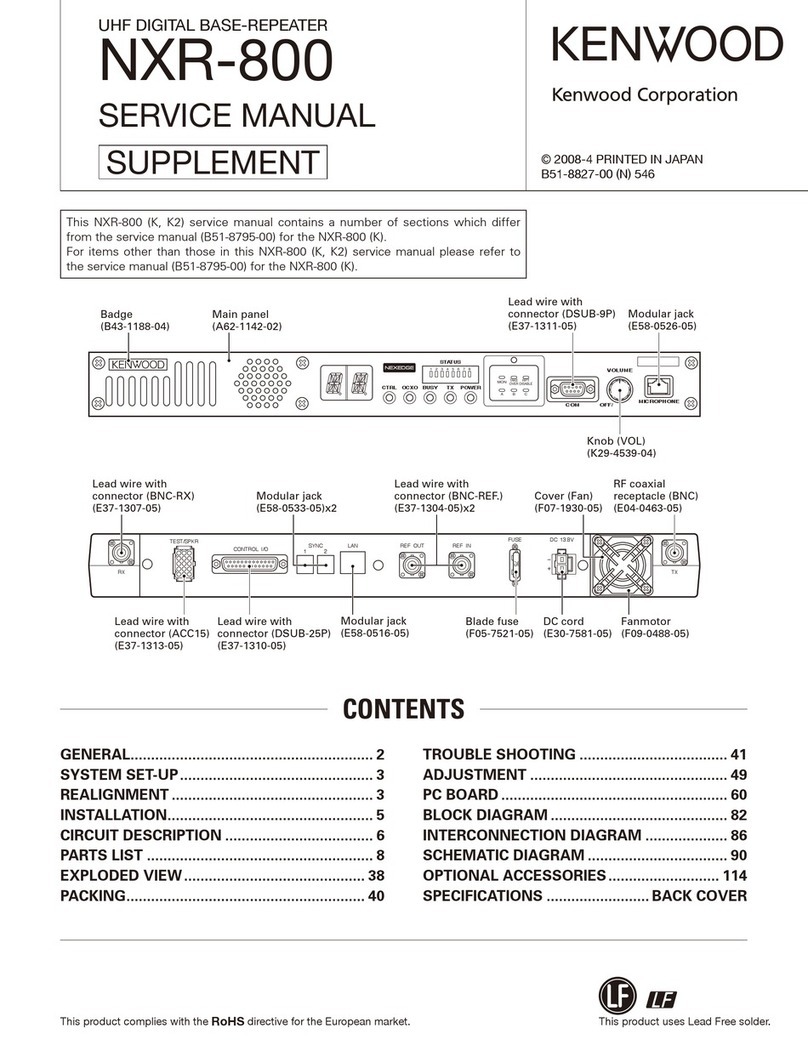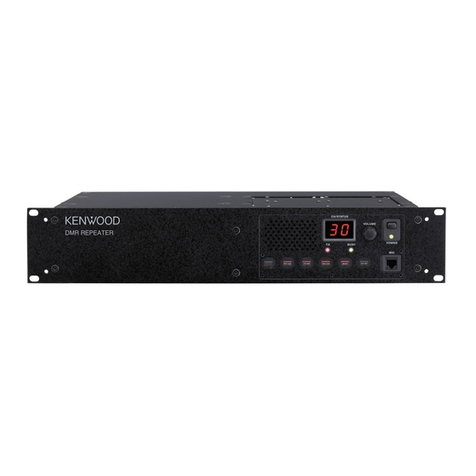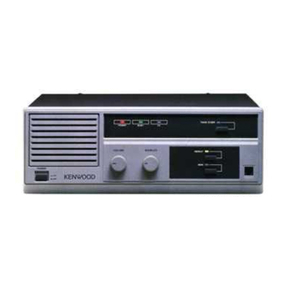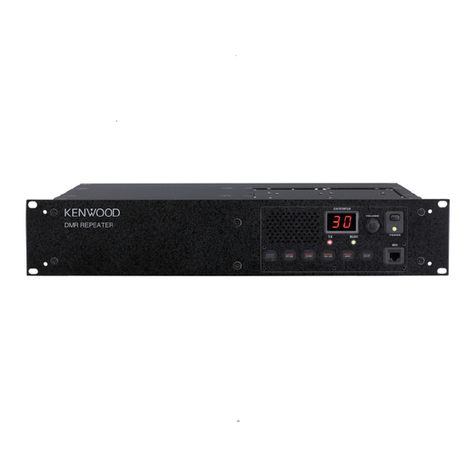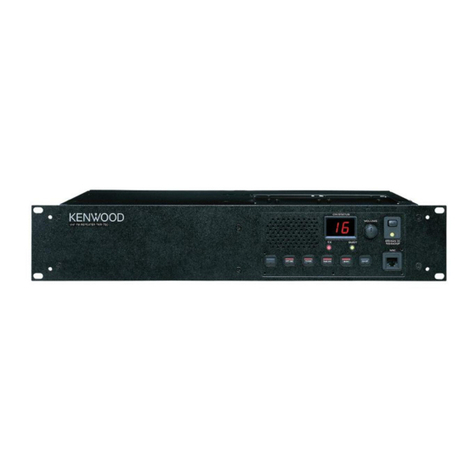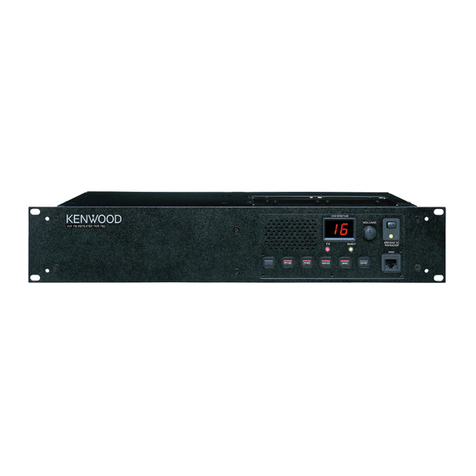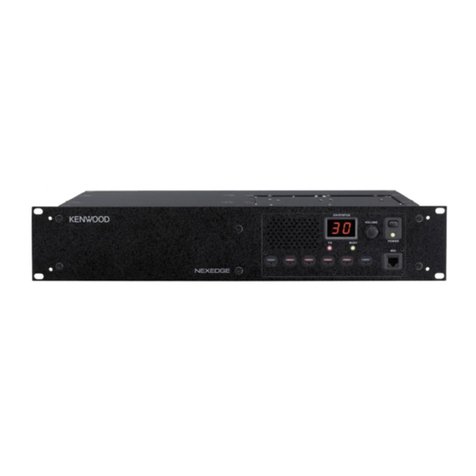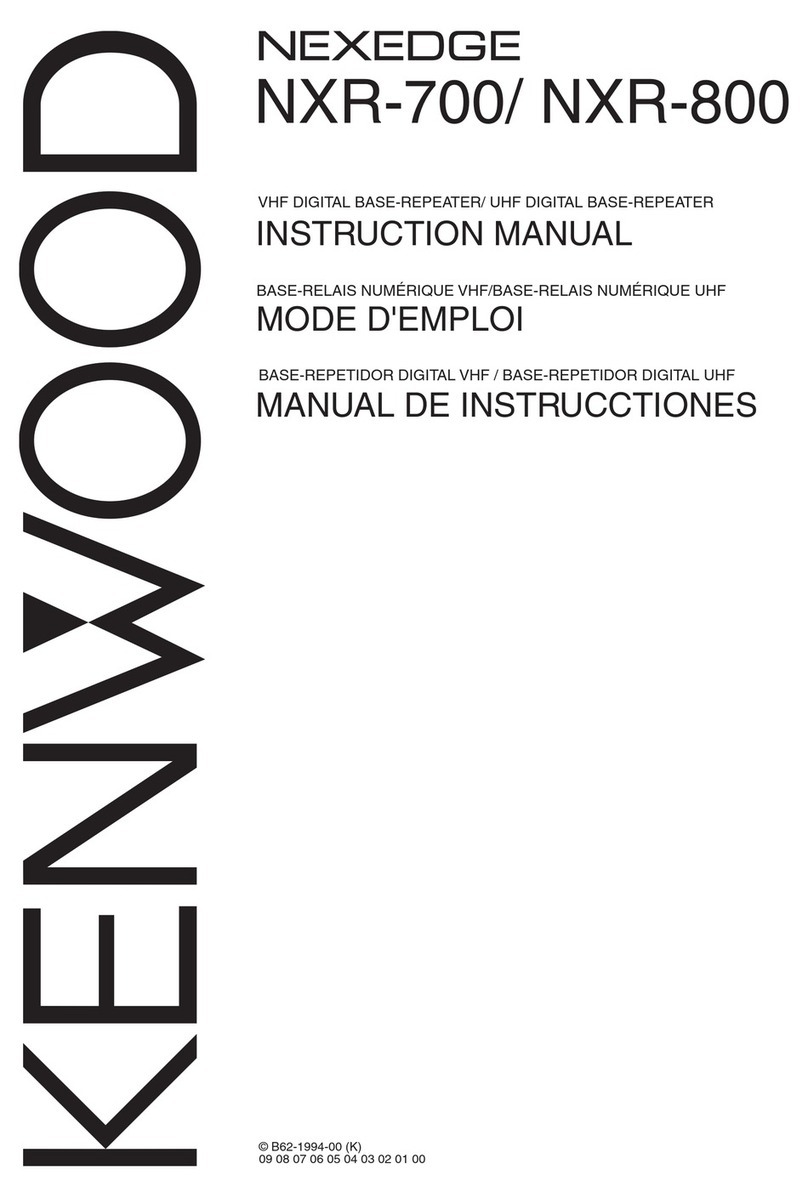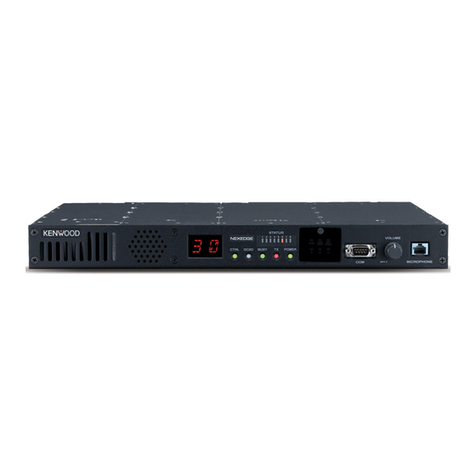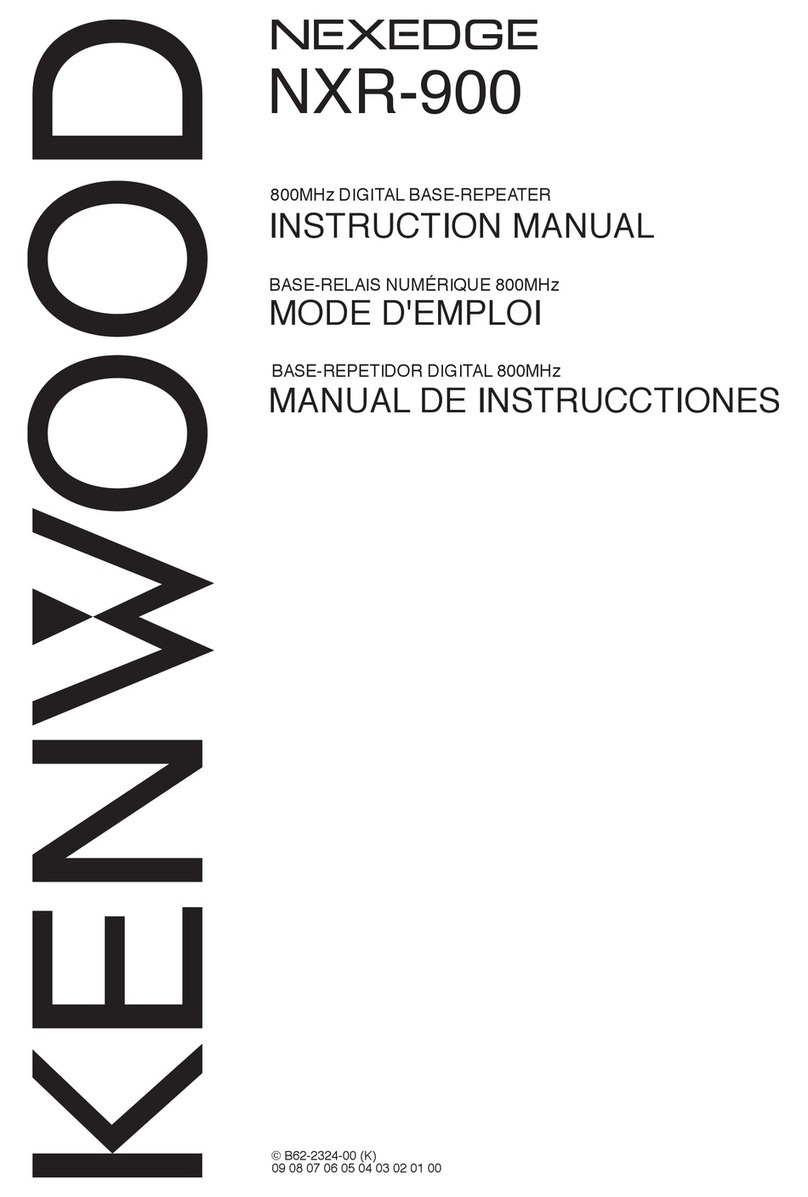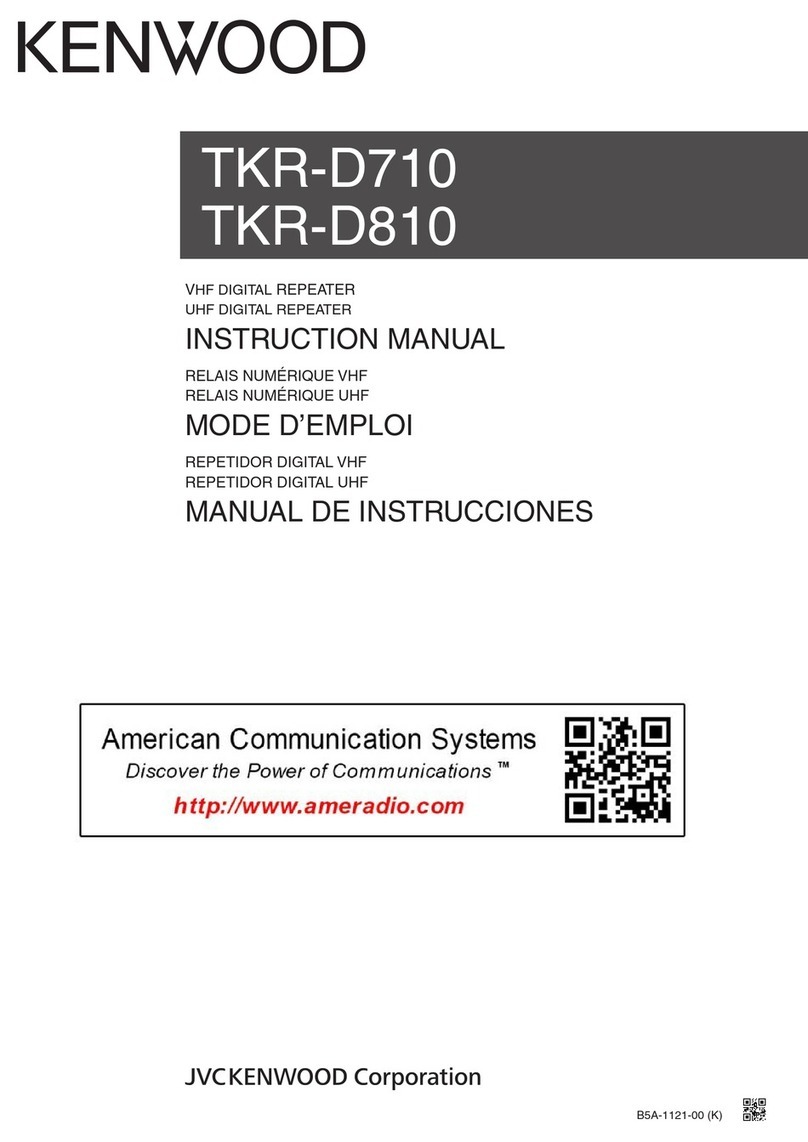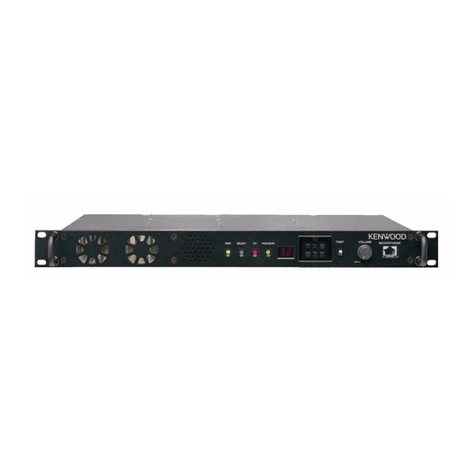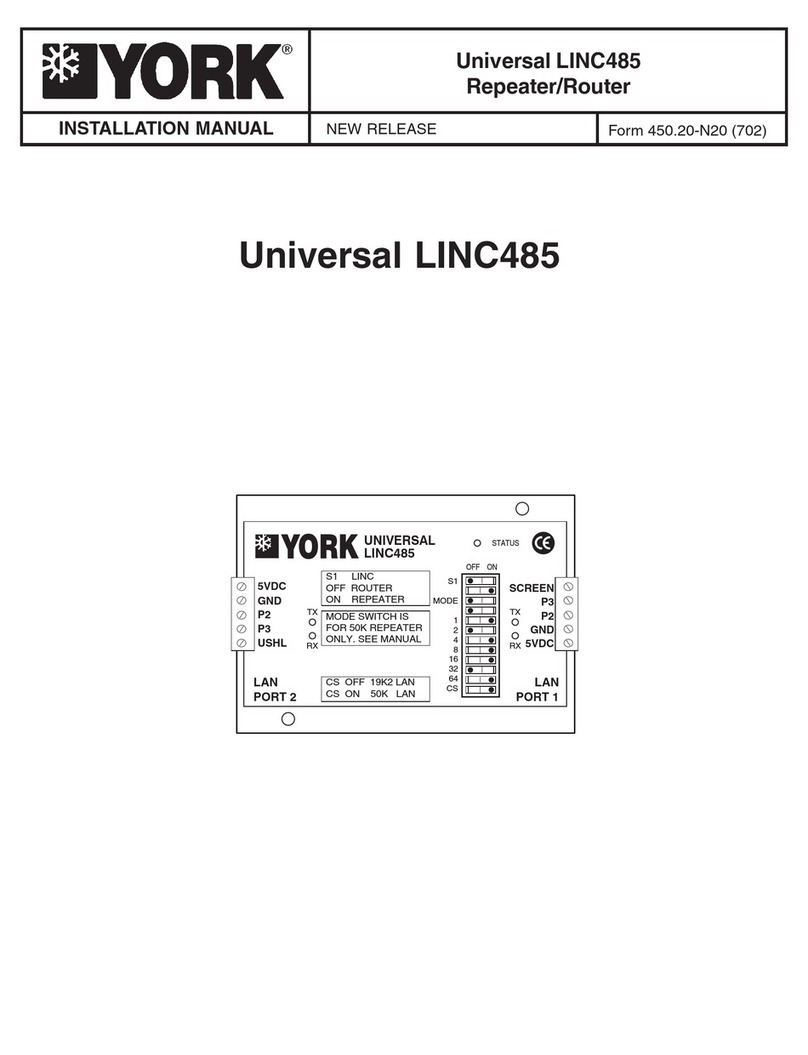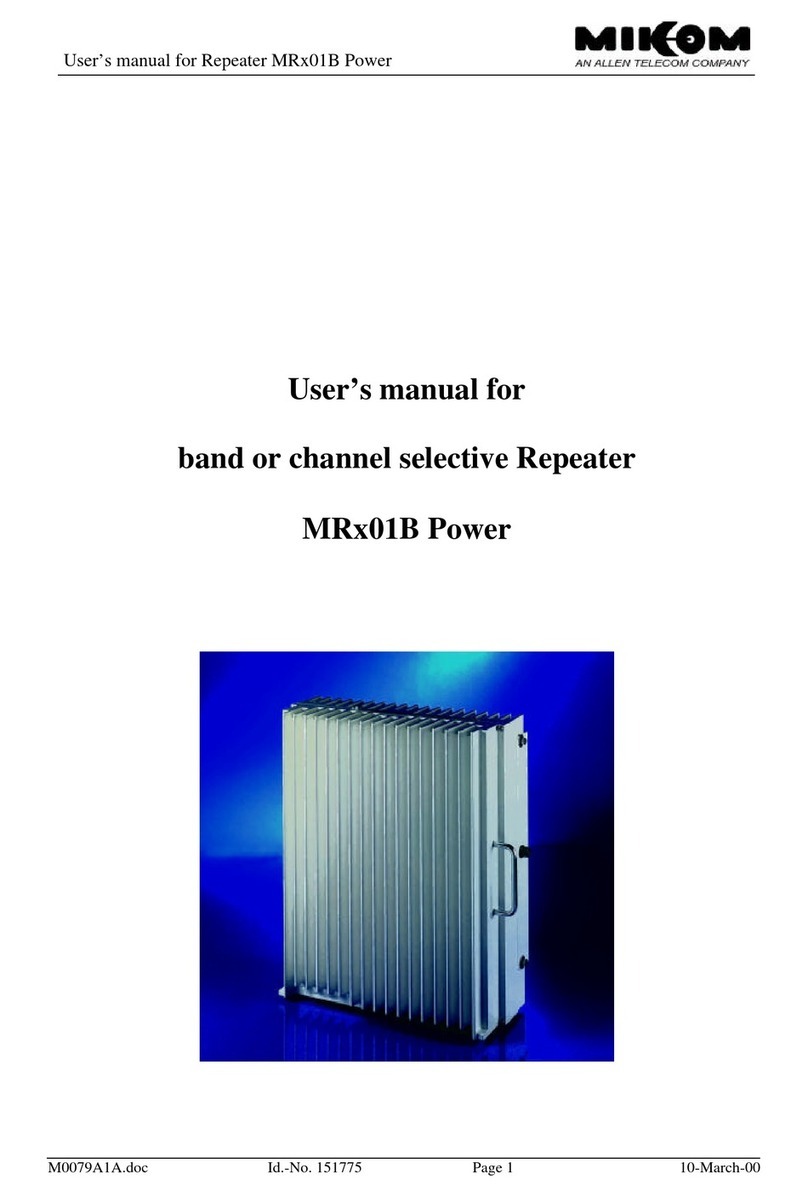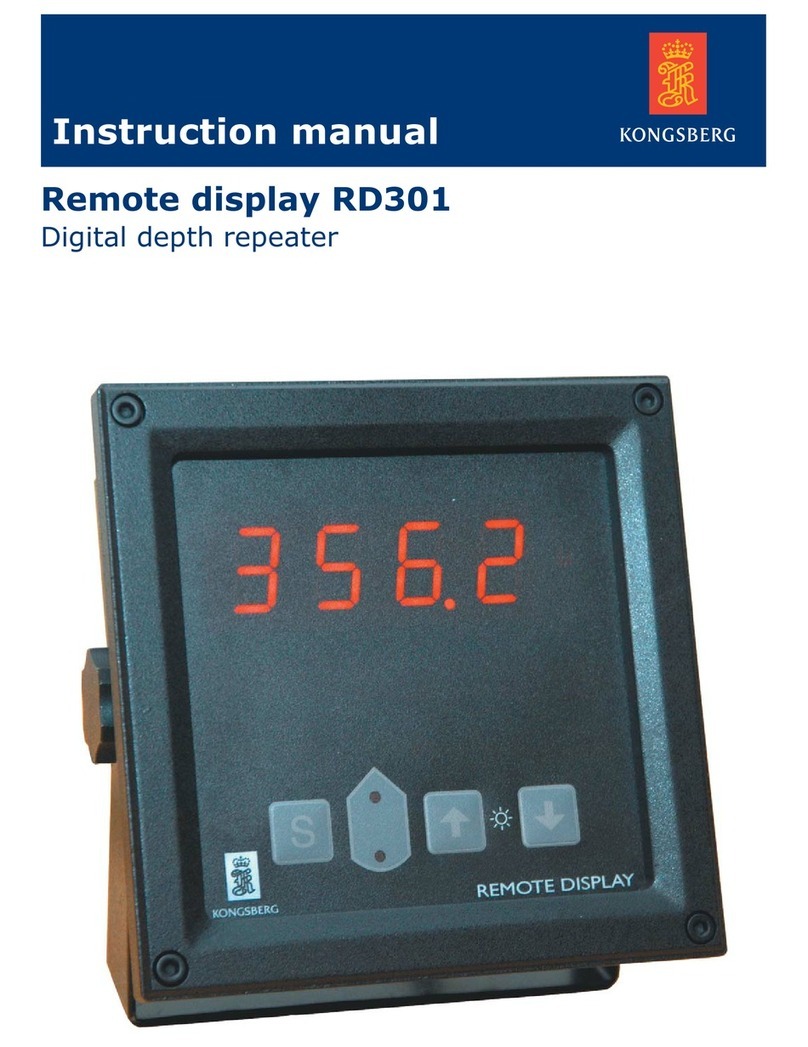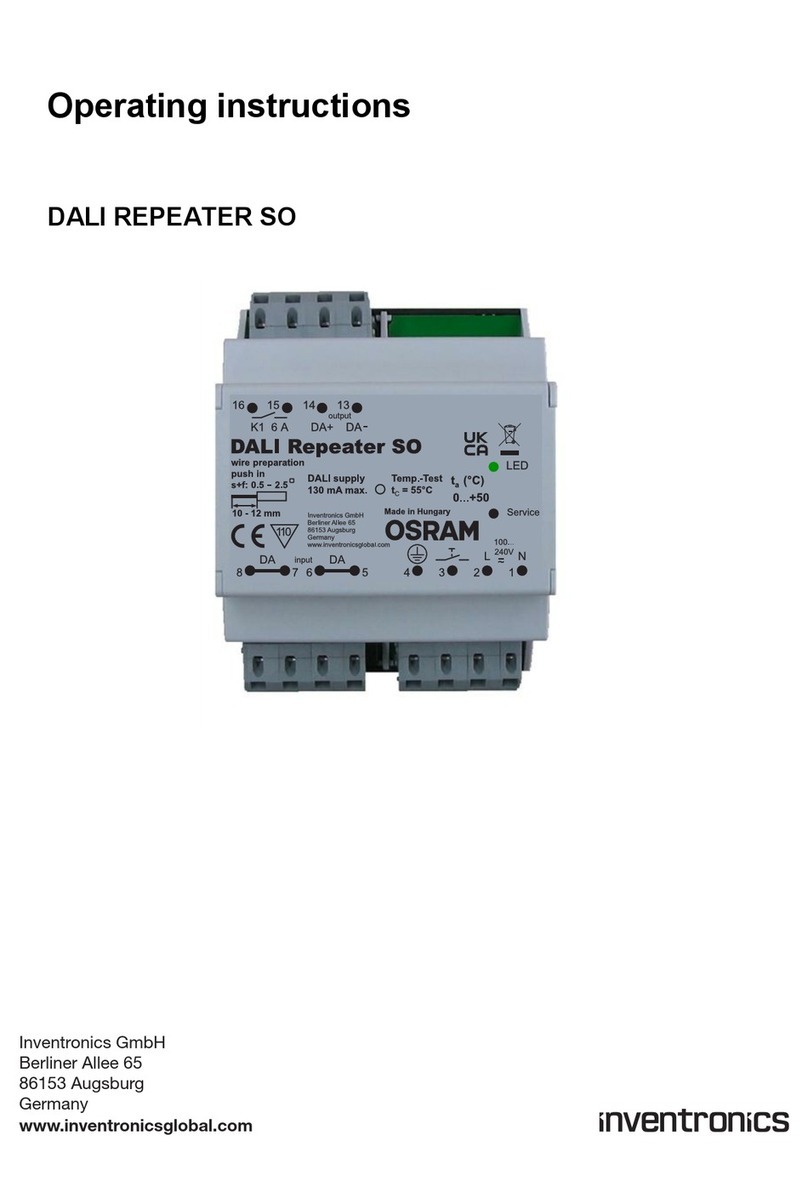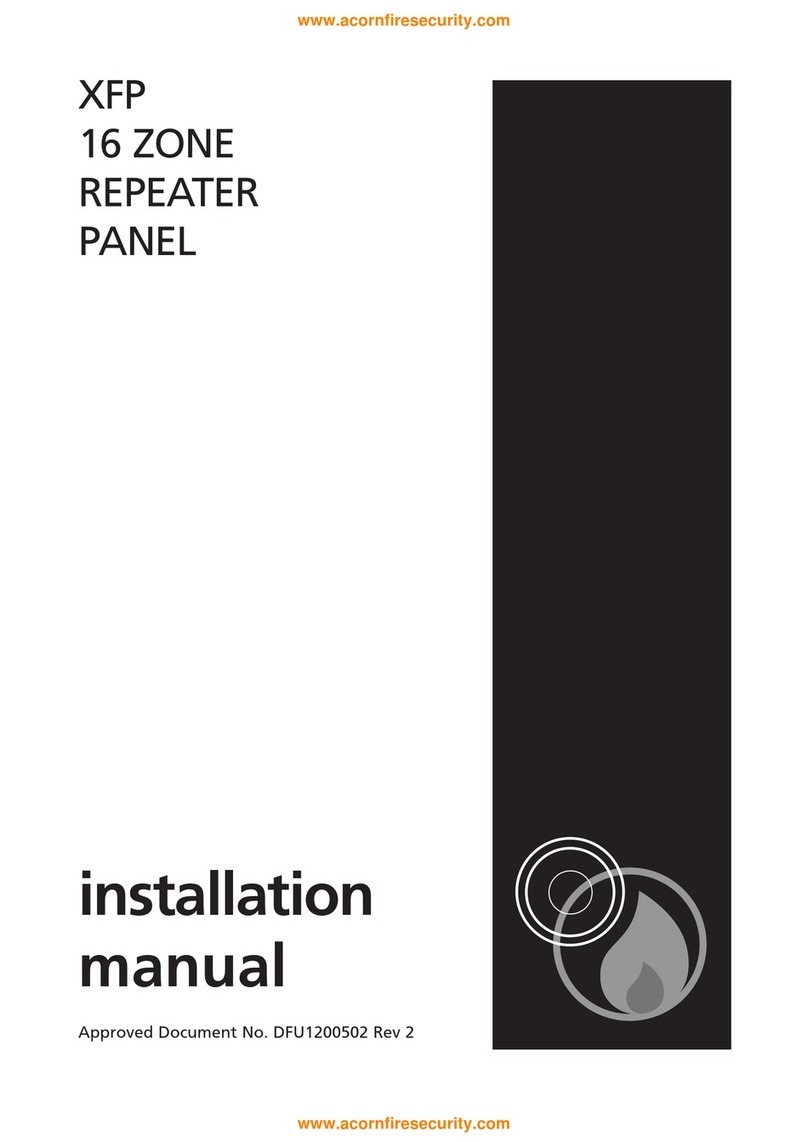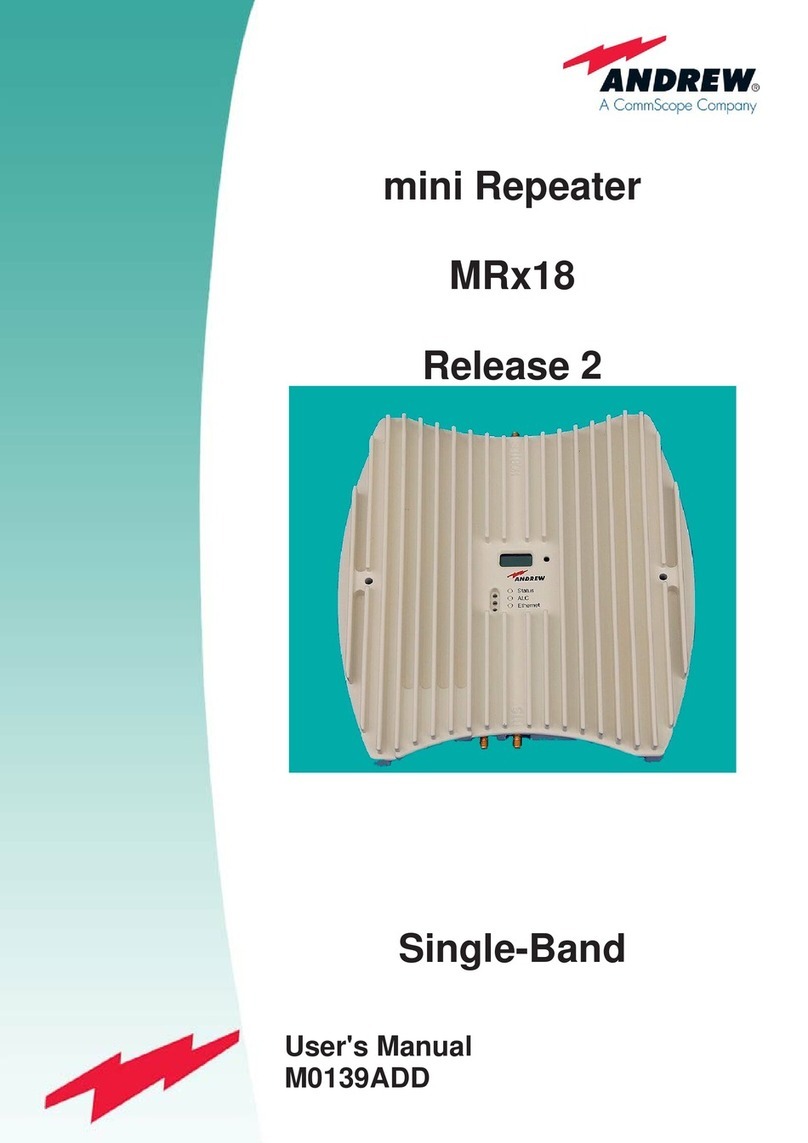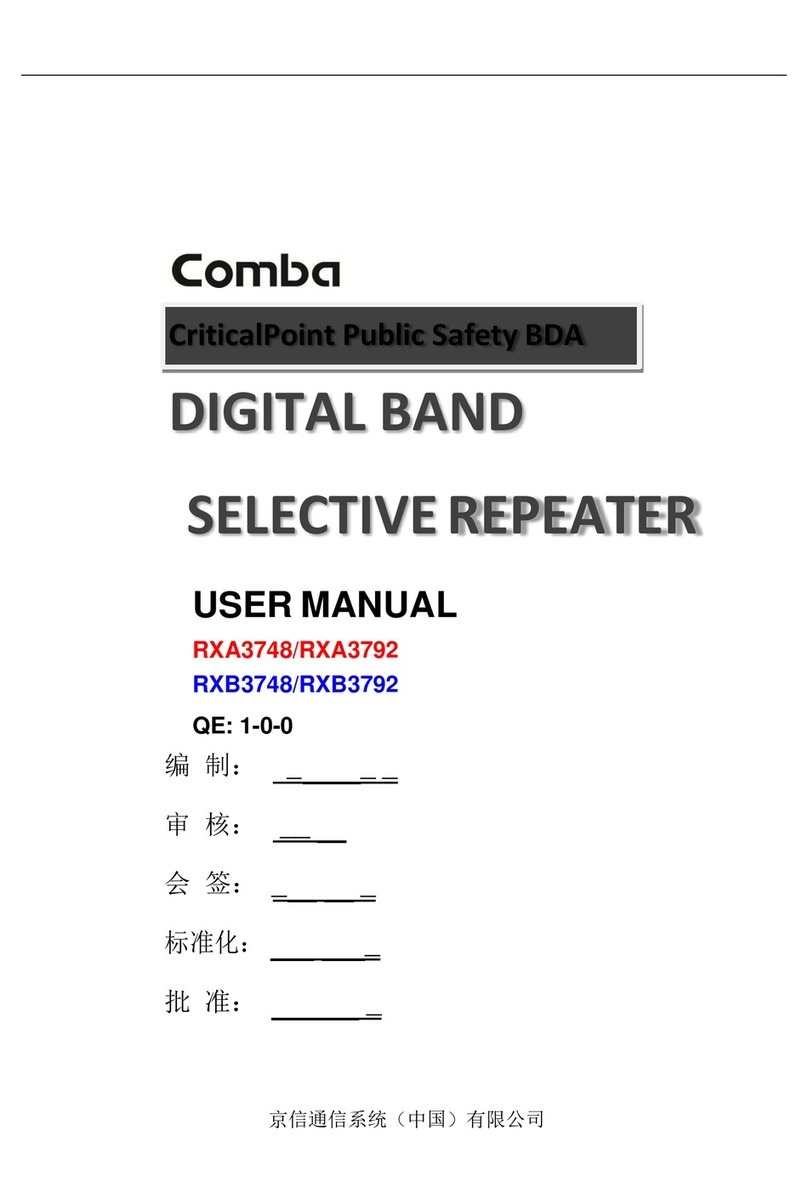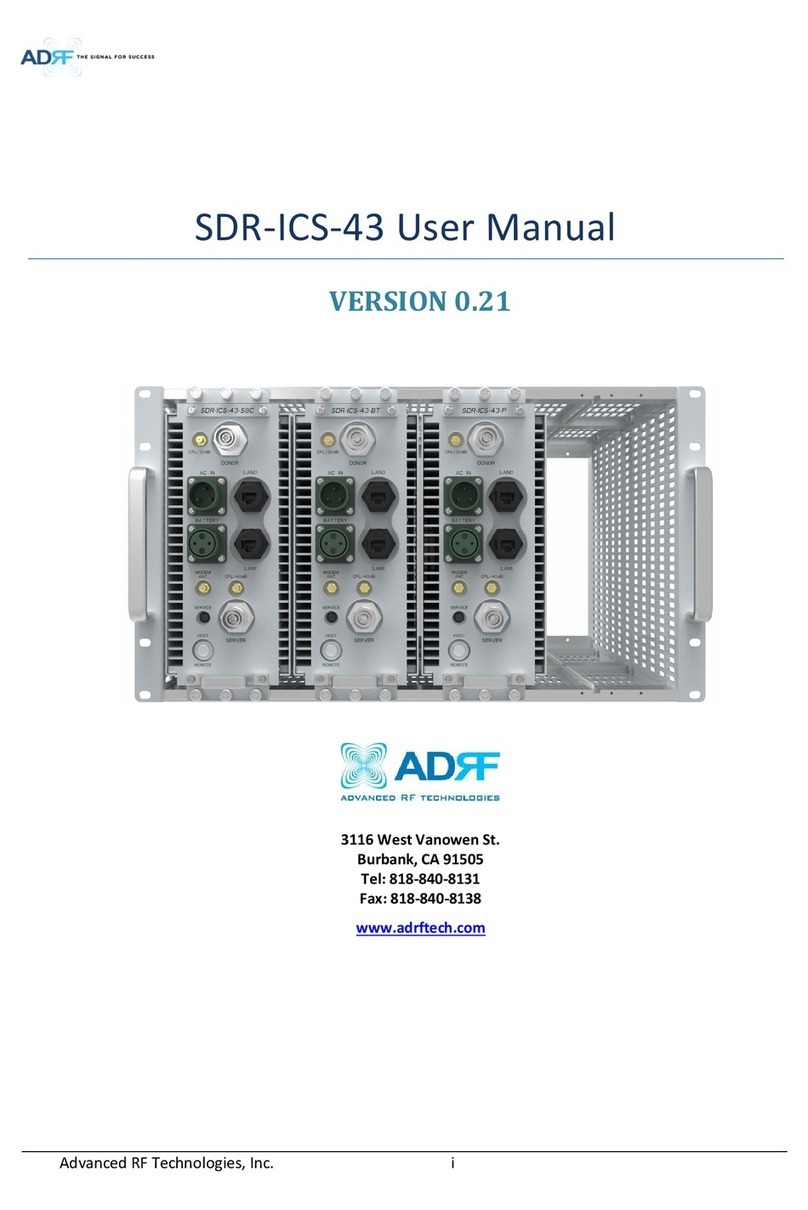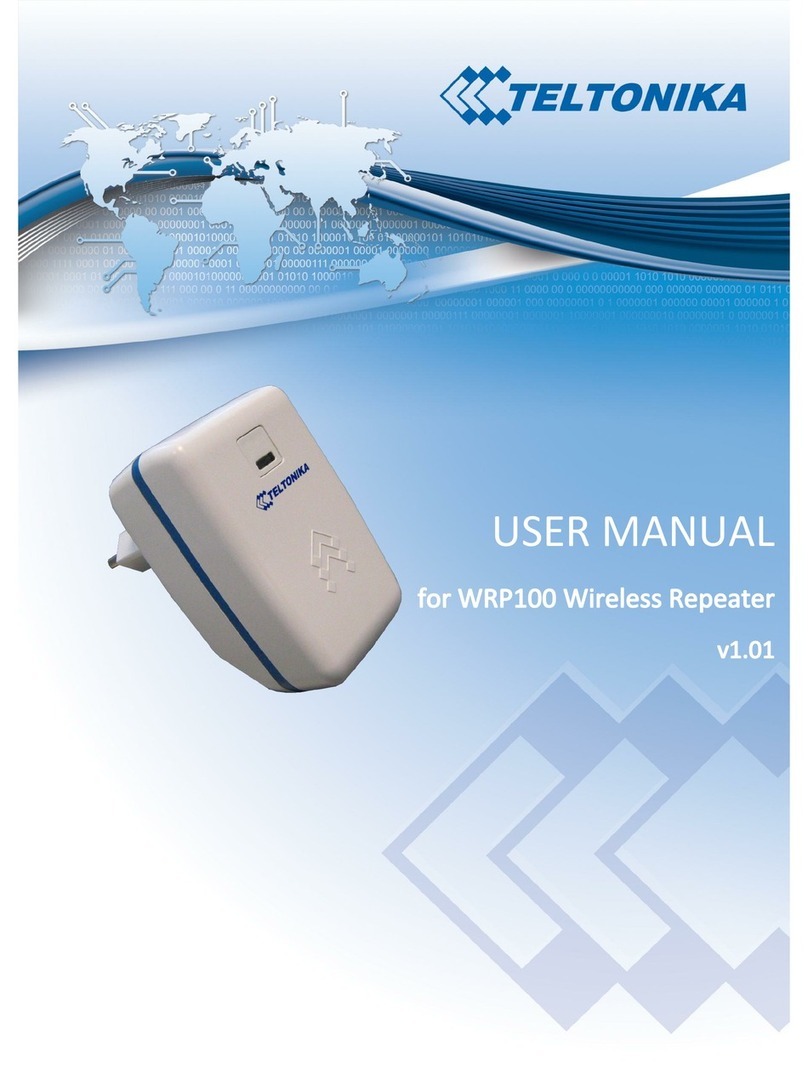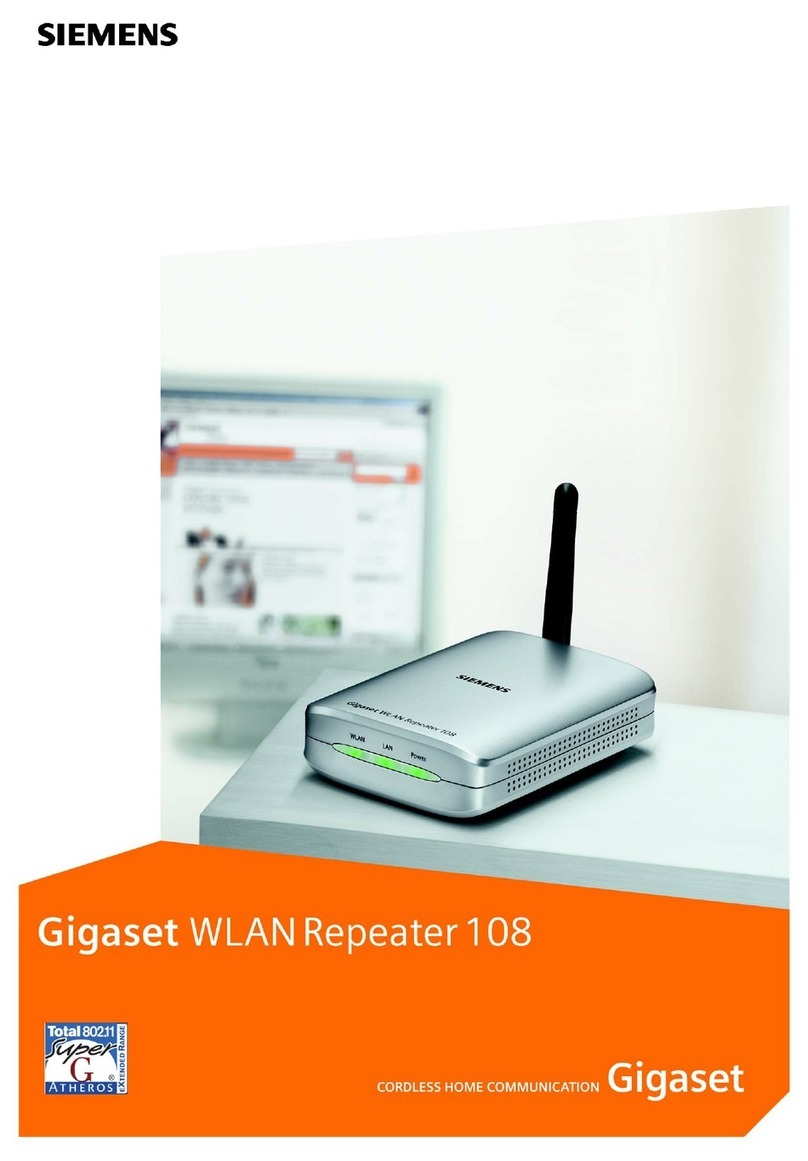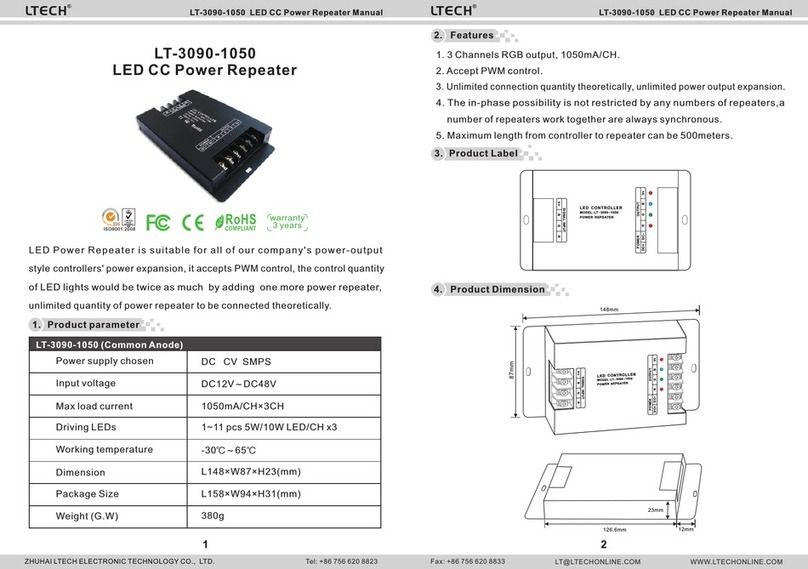
NXR-800
8
CIRCUIT DESCRIPTION
1. Outline
The NXR-800 is a UHF repeater operating in the 450~
480MHz frequency range.
2. Transmitter unit
The transmitter unit (X56-312 A/3) consists of the follow-
ing circuit.
(1) Internal/external reference circuit
(2) Transmitter reference 19.2MHz PLL circuit
(3) Transmitter Modulation 19.2MHz PLL circuit
(4) Transmitter DDS circuit
(5) Transmitter main PLL circuit
(6) Driver circuit
(7) Modulation level adjustment circuit
(8) AVR circuit
(9) Other circuits
2-1. Internal/external reference circuit
The internal/external reference circuit automatically
switches signals used as reference signals among the
5.99MHz internal DDS, the 10MHz external reference signal
and the 10MHz OCXO unit.
If no OCXO unit is installed, and there is no external refer-
ence signal, the 5.99MHz internal DDS (IC601) is selected
as the reference signal.
If the OCXO unit is installed and there is no external refer-
ence signal, the 10MHz OCXO unit is selected as the refer-
ence signal.
If an external reference signal (CN408/ 10MHz/ 0dBm or
higher/ Zin=50Ω) is input, the external reference signal is
selected as the reference signal irrespective of an existing
OCXO unit.
The internal/external reference circuit consists of Q419,
Q418, D401, D402, D405, D404, Q430, Q422, D601, IC405
and IC406.
The DDS circuit consists of X601, IC602, IC601, Q606,
CF601, Q603 and D602.
If either the OCXO 10MHz or external reference 10MHz
is selected as the reference signal, the reference output ter-
minal outputs the reference signal (CN403/ 10MHz/ +9dBm/
Zout=50Ω). This circuit consists of Q431, Q420 and Q425.
SW
OSC
X601
BUFF
IC602
BUFF
IC407
PLL IC
IC404
BPF
CF601
DDS
IC601 Q606
LPF
LPF
LPF
LPF
Q603
Q422Q430
LPF
Q425Q420Q431
Q419
D601
D602
SW
D404
D405
CN403
REF_OUT
CN408
REF_IN
CN407
OCXO
TX UNIT
2-2. Transmitter reference 19.2MHz PLL circuit
The transmitter reference 19.2MHz PLL circuit produces
a reference frequency signal for the transmitter modulation
19.2MHz PLL circuit, the Receiver unit (X55-310) Receiver
DDS circuit and the Control Unit (X53-414) DSP IC.
This circuit consists of Q401, Q402, Q412, Q415, Q416,
Q417, X401, IC401, IC404 and IC407.
The 5.99MHz or 10MHz signal produced by the internal/
external reference circuit is amplified by IC407 and supplied
to the PLL IC (IC404) reference signal pin.
The VCXO (X401) signal enters buffer amp Q417 and is
amplified by Q415. The higher harmonic wave is attenuated
by LPF and returns to IC404. Its phase is compared with
that of the reference frequency 10kHz.
The phase difference signal produced by the comparing
phase is converted to a DC voltage by a lag-lead type loop
filter. This DC voltage is input to the X401 control voltage
terminal for controlling the VCXO oscillating frequency.
The DC voltage passes through the IC401 operational am-
plifier, and is output as a voltage signal (CVT-REF) for moni-
toring the reference 19.2MHz PLL circuit lock voltage.
The stabilized 19.2MHz reference oscillating signal en-
ters the Q417 buffer amplifier and is amplified by Q412 and
Q416. The higher harmonic wave is attenuated by LPF, fed
to IC302 and used as the reference frequency signal for the
transmitter modulation 19.2MHz PLL circuit.
The 19.2MHz reference oscillating signal is also used as
the reference signal for the receiver unit (X55-310) and con-
trol unit (X53-414).
It enters the Q417 buffer amplifier for the receiver unit
(X55-310) and is amplified by Q401. The higher harmonic
wave is attenuated by LPF and is output from CN406.
It enters the Q417 buffer amplifier for the control unit
(X53-414) and is amplified by Q402. The higher harmonic
wave is attenuated by LPF and is output from CN405.
Fig. 1 Internal/external reference circuit
